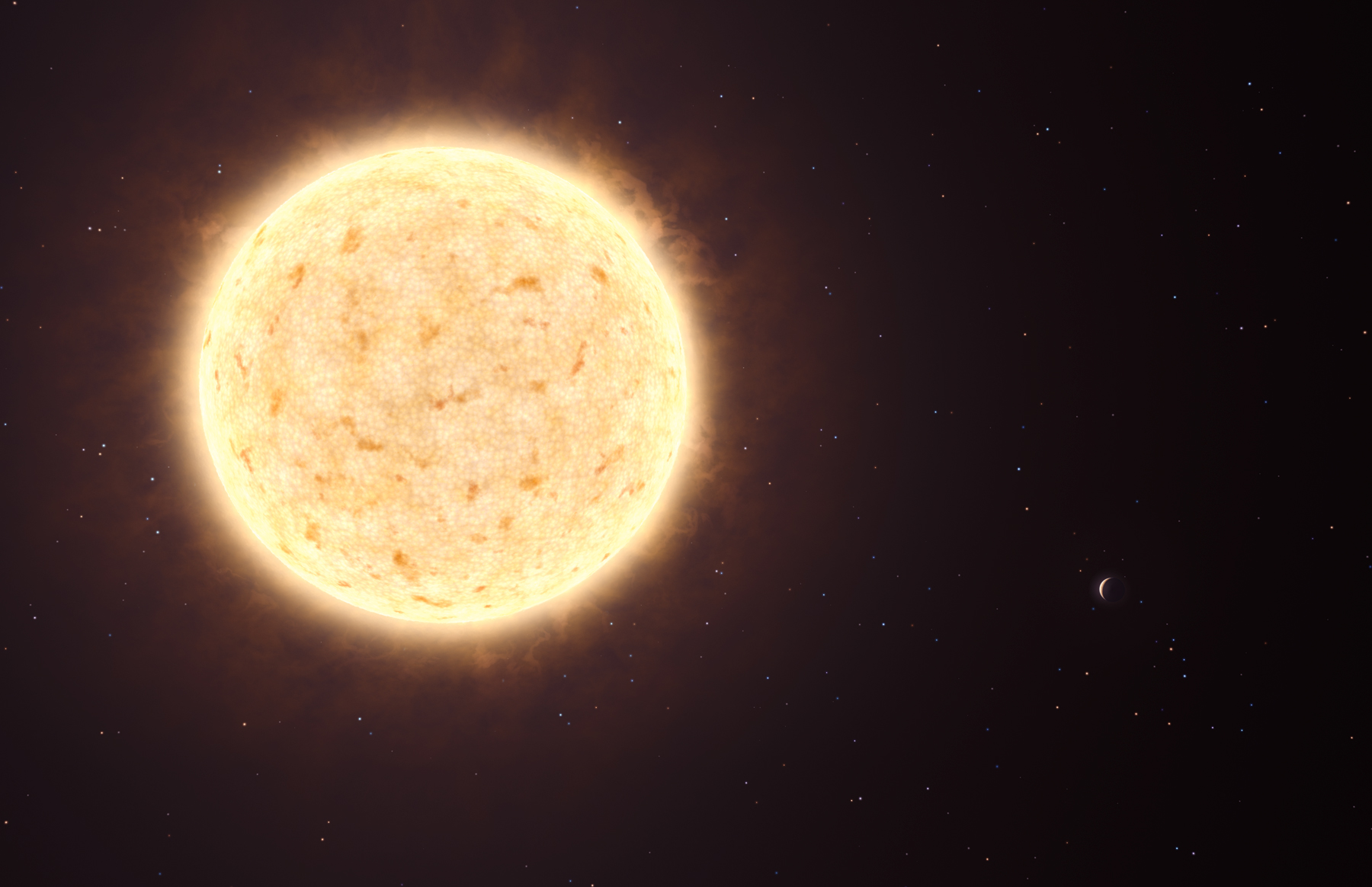A Jupiter-sized planet known as HIP 13044 b orbits its sun that was once a member of another galaxy, but it was swallowed up by the Milky Way

Astronomers have so far discovered over 500 extrasolar planets in the last 15 years, the latest discovery having the strangest past yet. But its future is also interesting, because it may reflect the way in which our solar system may end its life.
This Jupiter-sized planet known as HIP 13044 b orbits its sun that was once a member of another galaxy, but it was swallowed up by the Milky Way. While astronomers have never observed a planet in another galaxy, the discovery offers evidence that other galaxies have hosted stars that have hosted planetary systems.
The star is nearing the end of its life and as it expands, it may drown the planet, just as our sun may do to our world, and somehow, this planet survived the first dying breaths of the parent star.
"This star is in the horizontal phase of its life and is still holding a planet, which gives hope to those of us who are worried about what our solar system will look like in 5 billion years," says Markus Fossel, from the Max Planck Institute for Astronomy.
The star HIP 13044 is 2,000 light-years away from Earth in the direction of the southern group Fornax (the Furnace). It is part of the so-called Helmi Stream, a group of stars that originally belonged to a dwarf galaxy that was sucked up by the Milky Way, probably 6-9 billion years ago.
The planet was discovered thanks to the radial velocity method - astronomers saw fluctuations on the planet's surface caused by the gravitational tag of a companion orbiting it. The instrument they used was FEROS, a high-resolution spectrograph attached to a 2.2-meter diameter telescope at the La Silla Observatory, Chile.
"The discovery is exciting" says Rainier Gelment from the Max Planck Institute for Astronomy, who chose the target stars for this research. For the first time, astronomers were able to identify a planetary system in a stream of stars of extragalactic origin. Since these are extremely distant, it is not possible to discover planets in other galaxies, but a cosmic merger brought an extragalactic planet within our reach."
Last year, another group of astronomers discovered an extragalactic planet through "pixel crossing," when the star crossed in front of a more distant star, giving rise to the discovery of a brief but still detectable flare. However, this method relies on a single event - the chance of two distant light sources coming together, as seen from Earth, is slim, and there is also no possibility to confirm the existence of the planet.

8 תגובות
The subject as a whole sounds very interesting. The claim that was heard about the greater distance from us and an attempt to classify the level of the matter in inverse proportion to the distance - absolutely irrelevant....
What is not clear from the news (and noted in one of the responses), is the examination of the criteria for assessing that it is indeed a star system foreign to our galaxy, which was "thrown" from another galaxy and fell into our galaxy.
Was this diagnosis made as a result of her "blue shift" and the group of stars to which she belongs, or based on unusual components of this whole group according to spectral analysis?
Will we find anything unusual in the direction of movement or in the star's oscillations as a result of its moons or another parameter?
Thanks in advance for a detailed answer.
No one is worried, but the curiosity doesn't have to be only about practical areas for tomorrow morning. The fate of humanity in general is a factor important enough for anyone to be interested in.
"This star is in the horizontal phase of its life and it still holds a planet, which gives hope to those of us who are "concerned" about what our solar system will look like in 5 billion years," says Markus Fossel, from the Max Planck Institute for Astronomy.
I have a suggestion..those who are worried about what will happen in 5 billion years or even in a million years to take away their scientific degree because they are psychotic, don't worry!!
Aren't you tired of dealing with nonsense??!!!
Use these resources to study our solar system (about which we know nothing)!!
Amazing ! Thanks !
By the way - it's good that my father went to the source of the source because the direct source (the one linked at the end of the article) contains a lot of nonsense
Yehuda:
It is written more clearly in one of the sources of the source:
http://www.mpia.de/Public/menu_q2.php?Aktuelles/PR/2010/PR101118/PR_101118_en-hidden.html
Write a name:
Typically, remnants of swallowed-up dwarf galaxies can be detected as ribbon-like arrangements of stars known as "stellar streams". In this case, HIP 13044 is part of the so-called "Helmi stream".
Unfortunately, it was not explained how we know that the star belonged to another galaxy?, what feature do the stars that belong to the galaxy that was swallowed by our galaxy retain.
I would appreciate it if someone could give me an explanation
good week
Sabdarmish Yehuda